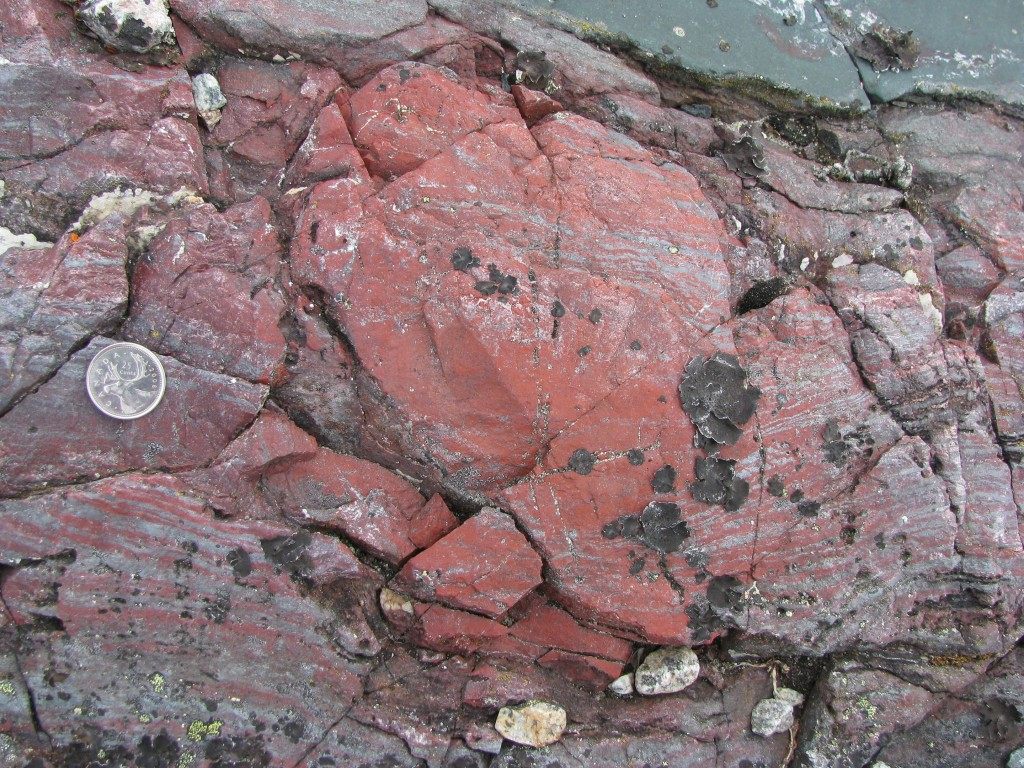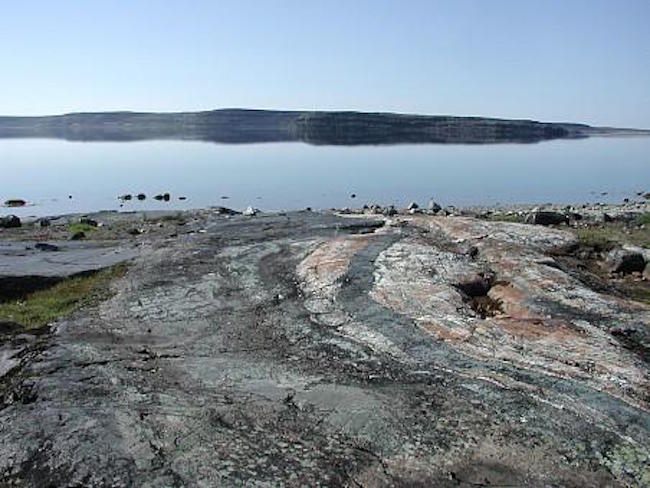The 4 Places on Earth to Look for the Earliest Evidence of Life
It’s hard to find rocks more than 3.6 billion years old.

For scientists searching for evidence of the most ancient life on Earth, there are just four places on the entire planet to look. Only in Québec, Labrador, Greenland, and East Antarctica is it possible to find sedimentary rocks dating back to the Eoarchean age, the era when life on this planet had just begun, more than 3.6 billion years ago.
In these few outcroppings, scientists hunt for microfossils left by ancient microbes. In a recent Nature paper, one team of scientists laid out evidence for microfossils that could be the oldest traces of life ever found. Discoveries like this one are usually controversial, because, to have survived as long as they have, these rocks have been through a lot: some scientists think that the structures detailed in that recent paper could also have been formed when the rocks were deformed at some point in their history.
The fossil in question came from a belt of rock in Québec, which was formally dated only in the past couple of decades. This particular rock belt is isolated enough that, after these rocks were first investigated in the 1960s, there had been little work done to map or date them until a team of Canadian geologists started to explore the area in the late 1990s. Once that team started determining the rocks’ ages, though, it was clear they were really, really old.

Travel to the remote reaches of northern Québec, and it’s possible to walk on this ancient rock. “We don’t have to drill or anything. The rock is completely exposed to atmosphere,” says Dominic Papineau, a lecturer at University College London, who collected the samples used in the new study back in 2008. Until about 8,000 years ago, the rock was covered by the ice sheet that once stretched down to what’s now the northeastern United States, but when the ice sheet receded, it left the rocks exposed and polished. There’s little soil or vegetation there now. Most of the area is dominated by volcanic rock, but there’s a stretch a little under 2 miles long of sedimentary rock, where traces of life from 4 billion years ago have a slim chance of surviving.
These rocks were first formed from an oozy layer of underwater sediment, where microorganisms could thrive. At some point, that layer of sediment mineralized and turned into rock, which was layered into an ancient piece of continental craton, a large chunk of the earth’s crust. In some places in the world, pieces of the earth’s crust move against one another so that one is pushed under the other, which starts the crust melting, creates volcanos, and destroys any evidence of ancient life in sedimentary rock. These most ancient pieces of sedimentary rock most likely survived because they were hidden deep inside a craton. They are small relics of the earliest history of our world: almost all of the rock that was around then has either disappeared, through erosion, or been transformed through metamorphosis.

Some of these ancient rocks were discovered decades ago. In Greenland, scientists first identified Eoarchaen rocks in the 1960s and ’70s, but, even though they were well-known, those rocks hadn’t always been accessible. One discovery, reported last year, came from a Greenland site that had been revealed in an unusually warm spring, when rain washed away the snow.
“That’s possibly one of the only positive outcomes of climate change,” says Papineau. “The ice sheet in Greenland has been melting, and it liberates and exposes this bedrock.” If there are more ancient rocks that have lasted through the ages, they may be hiding under the ice in Greenland or Antarctica.
Once such places are located, scientists like Papineau look for promising spots to sample, where the composition of the rock contains signs of life. Papineau sampled the rocks in the new study from a very small outcrop that stood out in the expanse of dark grey and green in the Québec rock belt. “There was a very localized place along the strike of this big unit,” he said. “It was red.” Right near it were rocks colored orange. These unusual colors indicated a concentration of iron, which is associated with ancient microorganisms. That’s how he knew he had to take a piece back to the lab.



































Follow us on Twitter to get the latest on the world's hidden wonders.
Like us on Facebook to get the latest on the world's hidden wonders.
Follow us on Twitter Like us on Facebook